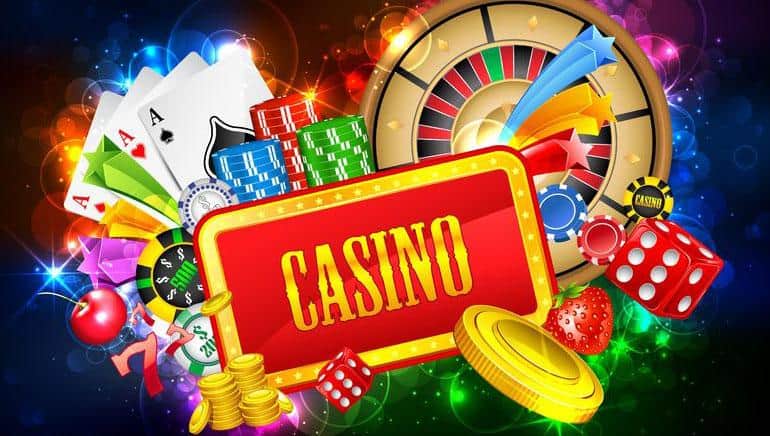Gambling Games and Their Role in Popular Culture

Casino experiences have long captured the interest of people around the planet, becoming an essential part of both fun and tradition. From the shimmering lights of Nevada to the engaging experience of internet gambling, these games evoke thrill, danger, and sometimes even a sense of sentimentality. They are not just simply entertainments; they have woven themselves into the tapestry of human experience, influencing everything from movies and melodies to style and literature.
The appeal of casino games goes beyond the betting aspect, tapping into broader themes of fortune, chance, and social interaction. As players gather around a poker table or rotate the roulette wheel, they engage in an age-old ritual that echoes with our collective desire for thrill and uncertainty. This captivation has led to the emergence of numerous references in cinema, songs, and video games, showcasing how intensely entrenched these pastimes are in popular culture. Whether it is the high-stakes tension of a traditional caper or the vibrant nightlife portrayed in music videos, casino games have created a substantial place that reflects our bond with risk and reward.
Social Impact of Gambling Games
Gambling activities have played a crucial role in cultural contexts throughout history. Originating from ancient civilizations, games of chance were often connected to rituals or gatherings. For instance, early forms of gambling can be traced back to ancient China and the Romans, where dice games and wagering on outcomes were popular pastimes. These activities not only functioned as leisure but also as means of social interaction, facilitating connections among individuals within communities.
As cultures evolved, so did the complexity and structure of casino games. The establishment of official casinos in the 17th century, particularly in the Italian region, marked a major shift in how games were viewed and organized. With designated spaces for gaming, the casino became a community center where patrons from various backgrounds convened. This change contributed to the legitimization of gambling, transforming it from a mere pastime into an established industry that influenced economy and regulations.
The impact of gambling activities on mainstream culture cannot be understated. As they were brought into the limelight in literature and movies, games such as Texas Hold’em and blackjack became symbols of risk, luck, and tactics. Iconic figures and narratives have emerged around these activities, illustrating societal attitudes towards luck, wealth, and vice. This fascination with gambling activities has infiltrated various forms of entertainment, cementing their status in the public imagination and linking them to wider cultural stories throughout the ages. https://ga179.xyz/
Portrayal of Gambling Activities in Media
Casino games have long been a popular theme in various forms of media, reflecting both the fascination and intricacies of gambling culture. Films such as Ocean’s Eleven and Casino Royale portray individuals who navigate dangerous scenarios, showcasing not only the allure of the casino atmosphere but also the tactics and choices that come with playing popular games like poker and 21. These films often dramatize the excitement of winning and the potential consequences of losing, encapsulating the risks involved in gambling.
Television shows have also explored the world of casino games, often integrating them into the plot as a context for character arcs and conflict. Series like Vegas depict the lives of casino workers and casino-goers, highlighting the vibrant, often tumultuous energy of the casino floor. Docuseries featuring high-stakes betting contests further emphasize the appeal of casino games, drawing viewers into the excitement and tactics involved in each round. Through these portrayals, media not only amuses but also prompts conversations about fortune, expertise, and the nature of chance.
Digital games have increasingly incorporated casino games into their structure, allowing players to experience the feeling of betting without financial risk. Games within the landscape of digital gaming often include online slot machines, online poker, and other popular casino games, creating an interactive experience that mirrors real-life gameplay. These digital representations make casino games accessible to a global audience, appealing to both gamblers and those who enjoy the rush of simulation. As a consequence, the portrayal of gambling activities in media continues to shape societal views and importance, highlighting their function in society and the cultural landscape.
Effect of Gambling Activities on Communities
Gambling activities have a significant impact on society, affecting various facets of societal norms and social behavior. They often function as a venue for social interaction, where people come together to enjoy a common experience. Casino trips with friends or trips to casinos become group events that build connections and create memories. This communal aspect enhances the fun value of casino games, making them a favored choice for celebrations and recreational pursuits.
Additionally, casino games have been depicted in countless movies, TV series, and literature, shaping perceptions and opinions towards gambling and gaming. Icons like James Bond competing in baccarat or the intense poker scenes in films have embedded these games in the collective imagination. This depiction often glamorizes the culture associated with gambling, attracting new players and impacting trends in both fashion and behavior. These portrayals can ignite curiosity and lead to a deeper investigation of the intricacies of gambling.
Nonetheless, there are also adverse implications linked to the popularity of casino games. The allure of quick monetary gain can lead to problem gambling and financial troubles for some individuals. The community must contend with these consequences, advocating for responsible gaming and education of the dangers involved. Finding a balance between the fun aspect of gambling activities with the potential for harm is crucial to ensure that they continue to be a beneficial aspect of our cultural landscape.
